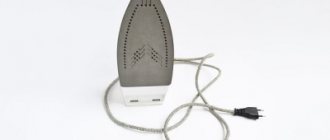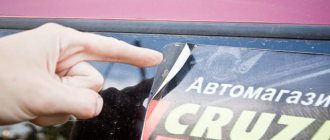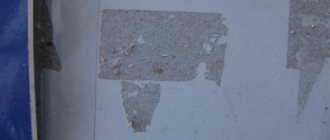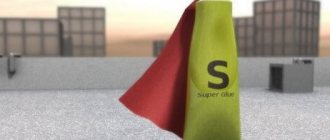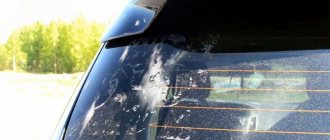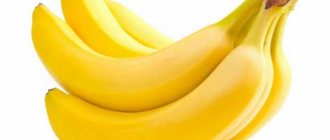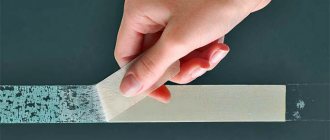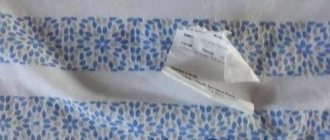Plastic items are used in all areas of our lives. These include toys, dishes, and household appliances, for example, scoops, basins... And very often housewives have to deal with price tags and labels that do not want to deviate from the novelty. No need to be patient! It’s enough to find out useful recommendations on how to remove glue from stickers from plastic, and you can safely create a neat appearance. Below you will find simple and effective tips on this issue.
There are many ways to get rid of glue. But they may not be needed. Try simply prying the sticker with a knife, blade or fingernail and remove the label. You can spray the capricious sticker with steam. Often the labels come off without a trace. If not, use cleanliness recipes.
Method 1 - mechanical
The easiest way to remove a label is to rub it with your fingers. If the sticker came off easily and there was a trace of glue left on the plastic, then you will have to try this option. By rubbing the glue with your fingers, you can roll it into pellets, thereby getting rid of it.
Advice! Do not rub the sticky surface with your nails, as this can easily damage the manicure. This method is only suitable if the label peels off easily from the base.
Cleaning metal
Since all metal objects can be cleaned with all available means, special means, the cleaning task is simplified. Do not rub the polish only with material with a rough surface. pre-soften
Glue with solvent, gasoline, oil, soapy water and a knife, clean it with a spatula. You can even use a hair dryer to heat the label and clean it. Do not turn it on to maximum.
Method 2 - essential oil
With the help of essential oils, you can carry out not only cosmetic procedures, but also fight the sticky price tag. To do this, apply a little oil to the remaining glue and rub the surface with a rag, trying to get rid of the mark. Then the problem area should be wiped with a paper napkin. A similar procedure can be repeated if the results were not achieved the first time. At the final stage, the plastic should be wiped with glass cleaner.
How can I remove the residue and clean the plastic?
In addition to home remedies, special remedies can help. They come in a compact package that allows you to keep the sticker remover handy and are effective.
Since plastic is a demanding material when it comes to cleaning conditions, before purchasing a new product, it is recommended to study the instructions and find out whether the product can be used on plastic .
HG
The product is available in liquid form. Packaging volume – 0.3 l, cost about 500 rubles. Contains up to 15% nonionic surfactants.
Application procedure:
- Apply to glue or sticker.
- Leave for 5 minutes.
- Rub with a brush.
- If cleaning does not help once, repeat again.
Advantages of use:
- efficiency;
- Ease of use.
Flaw:
- persistent unpleasant odor;
- price.
Glutoclean
The product, made in Germany, is designed to remove stickers from various surfaces, including plastic. The price of 500 ml is about 600 rubles. The composition contains non-ionic surfactants (5%).
Application:
- Dampen a cloth with Glutoclean.
- Moisten the remaining sticker marks.
- Leave for 1-2 minutes.
- Rub with a brush.
- Rinse.
- Wipe off.
Advantages of use:
- careful attitude towards the surface being cleaned;
- high efficiency;
- ease of use.
Minuses:
- not low cost;
- Packaging is not convenient in all cases;
- repeated exposure may be necessary.
KUDO
The product is produced in Russia, has a 0.4 liter aerosol package, suitable for use on glass, plastic, ceramics and other surfaces.
The drug has a thick form that is well distributed over the surface. On average, one bottle should be enough to treat 2 m². The cost of a bottle is about 350 rubles.
The product has many advantages:
- good removal of traces of glue, including old ones;
- ease of use;
- economical consumption;
- affordable price.
Method 4 - hair dryer
A fairly quick option to fix the problem is to use a hair dryer.
This method involves the following steps:
- The sticker must be held under a hot air stream for 45 seconds;
- then you should try to tear off the label again;
- if you couldn’t get rid of the paper, then you need to hold the hair dryer over the plastic for another 30-40 seconds;
- If the sticker also fails to be removed the second time, you should resort to another option.
Advice! Be careful! A hair dryer can melt plastic.
Secrets to removing glue stains
It is necessary not to fight, but to “agree.” After all, you cannot buy a product in a store without a label. Even if it is not there, sellers will have to find a certificate of conformity and stick the appropriate tag: these are the rules of the game in the modern world. If so, arm yourself with patience and understanding and begin removal.
You bought a product, tore off the label, but the trace remains. Proceed with removal immediately while it is fresh, otherwise the sticky mass will attract dust, lint and turn into an explosive mixture, which will take more time.
The adhesive mass is afraid of heat, so just heat this place with a hairdryer. The hot mode will be unnecessary; the medium mode will suffice, otherwise you may inadvertently ruin the thing. Surely you have a hair dryer for drying your hair, you don’t have to have a construction hair dryer.
If you want to use heavy artillery right away, because you think that heating is like a poultice for the dead, then buy a chemical. Of course, be careful first, they can be aggressive:
- I still remember the hole on my apron caused by a drop of hydrochloric acid in chemistry class when we studied the topic of acids.
- Soak a cotton pad in the solution and rub the base of the fabric somewhere inconspicuous.
The genie will not appear, so this is not Aladdin’s lamp, but you will understand whether it is worth applying the solution to the stain. If there are no complications, work with the dirty area and then wash the area with soapy water.
Method 5 - Cleaning Products
Using special citrus-based cleaners (which includes citric acid) you can remove the problematic mark. Quite often, many people use “Mr. Muscle”. When using this option, spray a small amount of the product onto the problem area. After this, you need to give the chemical time to absorb into the stain. Then the surface is wiped with a rag or napkin, and the area is rinsed with clean water.
Lemon or lemon juice to remove tape marks and price tags
Everyone knows that lemon is sour. The citric acid contained in it is an excellent solvent and degreases surfaces. Freshly squeezed lemon juice can be used to remove glue from furniture; it will not harm polishing or varnish if you do not leave it for a long time. It is also suitable for cleaning clothes from sticky traces; after soaking a section of fabric in lemon juice, the item should be immediately washed or rinsed in plenty of water. Suitable for cleaning almost all surfaces: plastic, metal, glass, ceramic. If you don’t have fresh fruit on hand, you can use a paste of citric acid powder and warm water.
Now you know everything about removing sticky residue. Stickers with barcodes will not overshadow the joy of buying and using a new item.
Method 6 - medical alcohol
It won't be difficult to get rid of the glue using regular medical alcohol. Products that contain alcohol are also ideal for solving this problem. It makes sense to pay attention to deodorant, vodka, perfume, cologne. First of all, you need to apply a small amount of product to the sponge. Then wipe the problem area. At the final stage, wipe the surface again with a paper towel.
Advice! All products (be it medical alcohol, essential oils, etc.) must be tested before use. To do this, you need to apply a small amount of the solvent used to an inconspicuous area and monitor the reaction of the plastic. In some cases, the surface may become deformed or lose color under the influence of a strong agent.
We scrub the plastic with our own hands (step by step)
Plastic products have different properties. The disadvantage of most plastics is their low heat resistance and sensitivity to aggressive substances.
We must take this into account.
- Prepare a paste-like mixture from water, soda and drops of any washing gel. Apply to the surface, leave for a while and rub again.
- Point the hairdryer at the piece of paper and, turning on the minimum power, tear it off.
- Wipe off the sticky mass with solvent, kerosene, alcohol, vinegar.
If you plan to use chemicals, test them on an invisible part first.
If you plan to use aggressive substances for cleaning, a test treatment of an inconspicuous fragment must be carried out.
Method 7 - table vinegar
Using table vinegar will solve the problem. You should get rid of the sticker in this order:
- Apply a small amount of vinegar to the sponge and treat the surface;
- leave the label on for 20 minutes so that the product has time to be absorbed;
- using a razor blade, scrape off the remaining label;
- After this, it is necessary to remove any remaining glue from the plastic by wiping the surface with a damp cloth.
Method 8 - disinfectant wipe + salt
Another effective method for dealing with sticky bases is this option. First, pour a small amount of fine kitchen salt onto the problem area. This manipulation will prevent the glue from curling. Then use a disinfectant wipe to wipe the surface. It is recommended to use as many wipes as needed. At the final stage, the remaining glue is removed with a damp cloth.
Method 9 - vegetable oil
Vegetable oil will help remove the glue. You can use olive, rapeseed or refined sunflower oil. Apply a small amount of oil to a rag and then treat the sticker. It is recommended to leave the label for 12 hours, allowing the oil to absorb into the sticky base. After this, use a razor blade to try to remove the sticker. If the result was not achieved the first time, then this manipulation must be repeated.
Peanut butter also provides the desired effect. When using peanut butter, you need to spread a small amount of the component onto the adhesive base and allow it to be absorbed. After this, use warm water and soap to wash off any remaining glue.
How to remove glue from a plastic sticker using improvised methods
Often, films and labels on plastic household items, dishes, and furniture can be easily removed using available home remedies.
Hot water or steam
If the plastic product can withstand elevated temperatures, dip it in a container of hot water or hold the area with the sticker over hot steam.
To work you will need:
- container in which the plastic product will fit;
- kettle with water;
- stove for heating water;
- soft sponge;
- detergent, dishwashing detergent or washing powder.
Clean the glue in the following order:
- Boil water in a kettle.
- Open its lid and hold the sticker over steam for 1-2 minutes to soften it.
- Let the plastic cool and remove the label.
- If the steam does not work, pour the water from the kettle into a container.
- Immerse the product in water.
- After 10–15 minutes, remove the label by hand or rub the adhesive with a sponge.
- Wash off the adhesive from the sticker with powder or a mild cleaner.
- Rinse the plastic product under running water.
The method is suitable for small-sized products. To steam a sticker on a large item, use a steam iron or steam generator.
Ethyl alcohol or vodka
Medical alcohol, ethanol, vodka dissolve the substances that make up the glue.
Use this property to remove stickers from plastic. To do this, prepare:
- medical alcohol or vodka;
- napkin or rags.
The procedure is as follows:
- Dampen a cloth with alcohol.
- Wrap it around the label or adhesive area.
- After 10-15 minutes, wipe off the sticker and adhesive, moistening the cloth with alcohol as necessary.
- Wash the plastic with clean water.
Ethyl alcohol has a specific odor, so open the window for ventilation during the procedure. To protect the skin of your hands, wear rubber gloves.
Sunflower oil
Penetrating under the label, it softens the adhesive substance. The oil makes it easier to remove the sticky layer from the plastic without damaging it.
To work you should prepare:
- small container with sunflower oil;
- thick fabric or napkin, which you won’t mind throwing away later;
- plastic spatula.
Carry out cleaning as follows:
- Apply vegetable oil liberally with a napkin to the plastic with glue.
- Let the fat work for 15-20 minutes.
- Using a plastic spatula, carefully remove the sticker along with the adhesive.
- Repeat the procedure if necessary.
- Wipe clean plastic with a sponge and dishwashing detergent, and then rinse with clean water.
To remove glue on plastic, any vegetable oil (corn, olive, cosmetic, linseed) will do.
Baking soda
Sodium bicarbonate will remove labels stuck to plastic without damaging it.
For work, prepare:
- soda;
- some water;
- unnecessary napkin or rags;
- latex gloves.
The sequence of actions is as follows:
- Wear rubber gloves.
- Dilute baking soda in a small amount of water to form a paste.
- Using a napkin, apply it to the area that needs to be scrubbed.
- Let the soda slurry sit on the label for 10-15 minutes to soften the adhesive.
- Rub the plastic with baking soda.
- After removing dirt, wash the plastic with clean water.
This method is safe for humans, but is not very effective for persistent adhesive bases.
Other methods
In addition to the previously mentioned methods of cleaning glue, you can use:
- ammonia;
- acetone;
- laundry soap;
- glass cleaner.
Use them on new and old glue stains. If acetone or ammonia is left on for more than 30 minutes, the plastic may turn yellow.
Method 10 - nail polish remover
This product will allow you to effectively get rid of glue. Before using nail polish remover, it is very important to familiarize yourself with its composition. You should check that the composition does not contain acetone. The product must be applied to the label for 5 minutes, allowing it to be absorbed. Then remove any remaining glue using circular movements.
Advice! If you use nail polish remover without first familiarizing yourself with the composition, you can easily damage the product. Some brands contain acetone, which can melt plastic. It will be easy to protect your item from damage by following this recommendation.
Method 11 - masking tape
It is also easy to remove the glue using regular masking tape. To do this, just stick adhesive tape on the sticky mark. Then you need to fix the tape in your hand and tear it off in one sharp movement. If after the first attempt there is still a small amount of glue left on the plastic, then the procedure must be repeated.
Useful tips
By following a few simple tips, it will not be difficult to extend the life of a new item and save time:
- When working with colored or delicate surfaces, you should be as careful as possible. In this case, use a regular eraser (soft side) to rub the problem area. It is not difficult to remove eraser marks using a cloth previously soaked in a soap solution.
- It will be easier to completely remove the entire price tag from the plastic if you pull the piece of paper in the right direction (usually determined experimentally). If you tear off the label from the opposite side, you will not be able to remove it completely.
- When removing price tag residue, it is more effective to use a toothbrush instead of a rag. This option will allow you to quickly deal with the problem, however, it is not suitable for delicate surfaces.
Using ordinary means at hand, it will not be difficult to remove the remaining glue from the plastic. If the chosen method did not give the desired result, it makes sense to choose another option. When working with delicate plastic, you must be as careful as possible, as you can very easily damage the base. When using any product, you should test its effect on an inconspicuous area of plastic. This precaution will help keep the new item safe.
Types of stickers
The purpose of stickers is to inform the buyer. They contain information about the manufacturer, the shelf life of the product, and the rules for its use. The labels are attached with glue in any case, but the methods of their removal depend on the material from which they are made.
Polymer based
Polymer-based stickers are made of plastic. Their material resembles a thin but durable oilcloth. Polymer labels can be easily separated from the surface if they have been recently applied. They do not tear, leaving behind small pieces of paper. If the glue has not had time to dry, it can be quickly removed from any surface.
It is difficult to peel off the sticker without leaving marks if the glue has already dried. In just 2-3 days it manages to undergo the polymerization process and turns into a solid varnish. The sticker adheres strongly to it, so it breaks when removed. Polymer varnish is difficult to remove from any surface.
Paper based
These stickers are made from paper. It is not very durable, so when you remove the labels, they tear and turn into small pellets.
It is easier to clean the surface of the material from sticker residues: just moisten it with warm water. Paper labels come off easily when heated. And vegetable oil removes the pellets from them.
